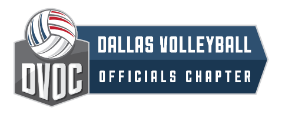1
Net violations
How do I know when to call a net violation? What if I can’t tell if the net hit her hand or her hand hit the net? What if her hair hits the net? What about her head? Please explain. I see some people never call any net violations and others call lots of net violations.

Great question! Let’s start with what the Rules Book says about a net fault:
Rule 9.Section 6.ART. 7 . . . A net fault occurs while the ball is in play and: a. A player contacts any part of the net including net cables or net antennas. It is not a fault when a player’s loose hair touches the net, or the force of a ball hit by an opponent pushes the net or net cables into the player.
The rule states that the player has to be the initiator of the contact. Ask yourself “Did she go into the net or did the net hit her as a result of the movement of the net from the ball (that is the only thing that should be causing the net to move). Now if you really don’t know then don’t call it. But if a coach questions the “no-call” be ready to answer for your decision.
If a player is wearing her hair in a ponytail or her hair is hanging “loose” and makes contact with the net there is no violation. However, if her hair is in a bun or tight to her head that is part of the head and is a violation should her hair/head make contact with the net. The key word is “loose” hair.
Why it seems net faults are called more often at times than others is difficult to explain. Many times it is the level of play that results in more net faults than others. The skill level of the players can make a difference – more disciplined players probably commit less net faults than less disciplined players. But, yes, it can sometimes be an official’s error. An official should never call a net fault unless the official absolutely sees the violation. Net faults can easily be missed and many times it is either poor positioning on the part of the official or poor transitioning from one side of the net to the other during play.
Here are some helpful tips:
1. Good spacing and angles. Where you stand and where you are looking makes a big difference. The wider the field of vision both up and down as well as width.
2. Watch the net and centerline as the R2 – not the play of the ball. Focus.
3. Watch the entire net.
4. Call what you see. Don’t call what you don’t see.
5. If you miss a net fault and take some heat work hard to make sure you get the next one.
A moving net does NOT always mean someone was guilty of a net fault.